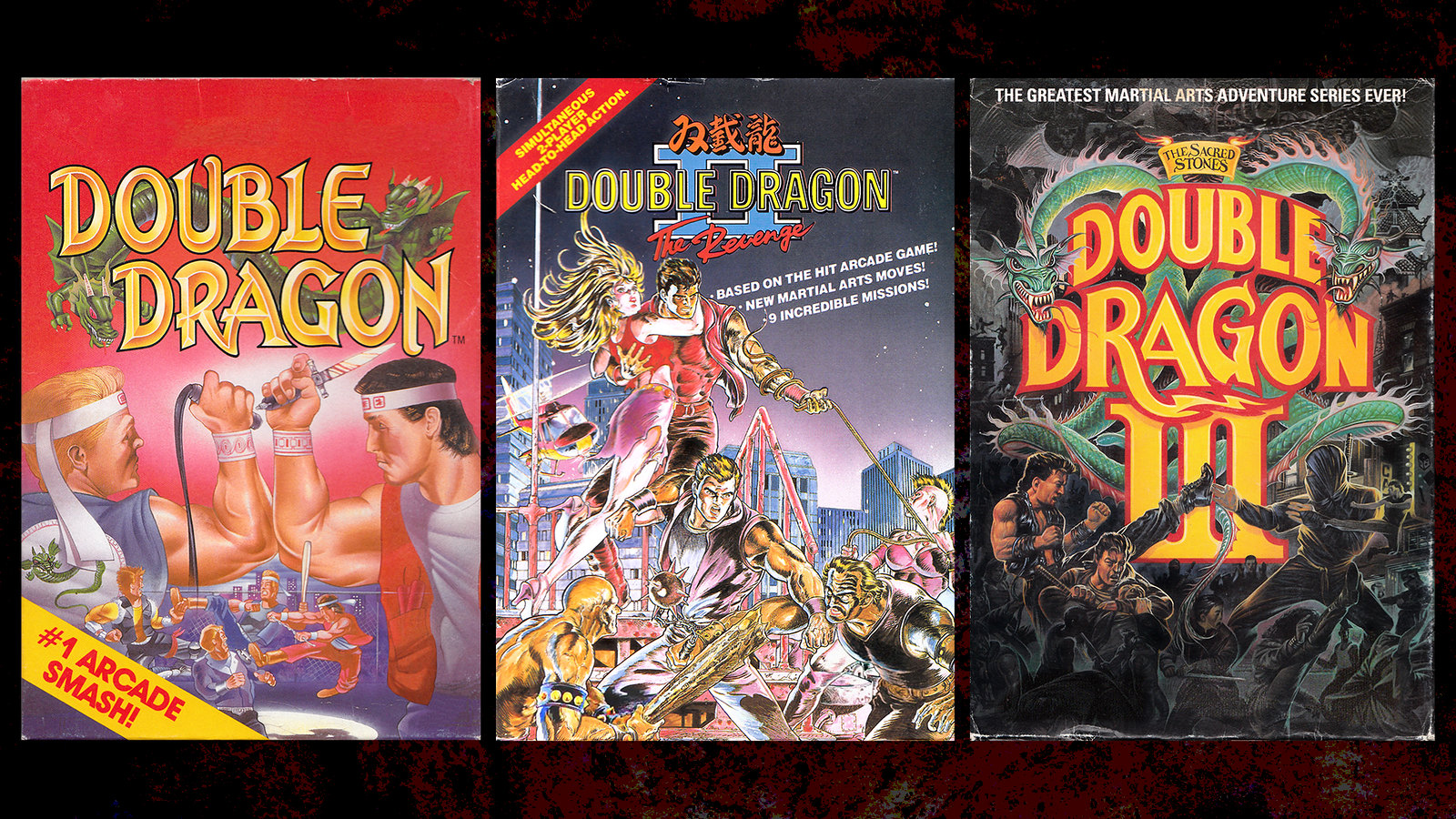Celebrating Double Dragon’s 35th Anniversary
My name is Takaomi Kaneko from Arc System Works. In the past, I worked on the River City series and Double Dragon 4 as a producer, illustrator, etc. When PlayStation asked me to reflect on the series as it marks its 35th anniversary this year, I decided to interweave stories I personally heard from the game’s creator and then director (1988) Yoshihisa Kishimoto as well as WayForward’s Tomm Hulett.

The origins of the original’s co-op mechanics
In the 1980s, the video game business’s strategy was focused in the arcade sector, chiefly sales of arcade cabinets.
In this way, the number of players for any given game would be determined before development would commence, so the game would fit the cabinet type that needed to be sold. As such, Technos Japan’s in-house sales team – which was very powerful at the time – made a strong proposal to the development team that it should consider creating a game for a two-player cabinet. The result was the first Double Dragon.
At a later date and in similar fashion, the team proposed a title that’d use a three-player cabinet, resulting in 1990’s Double Dragon 3. For the first time, the series’ story was altered to include a third brother for the third title.
Balancing the game around two players
As the game was designed for arcades, there was no plan to balance its gameplay. To encourage players to team up with friends, Double Dragon was designed to be extremely difficult to complete for a solo player, requiring considerable skill. This encouraged cooperative play to make the challenge surmountable – and therefore add more coins to the machine.
Cooperative play continues to thrive today, be it local or online, letting players complete challenges by inviting friends to team up to overcome difficulty spikes.
The decision to include friendly fire or not
Friendly fire was a relatively new concept back in the 1980s. It added a layer of strategy to combat, as players would need to communicate with each other during gameplay to avoid striking each other. However, its inclusion in Double Dragon came about from player interactions during location tests.
Location tests in the arcade sector are a way of gaining player feedback. These allow the development team to see how the game performs by bringing the cabinet to a small number of select locations and monitoring players’ reactions. Friendly fire had been designed and implemented in the game at this point. During the US localization tests for Double Dragon, the team observed that many players who started a two-player game not only played cooperatively, but also started attacking each other. The mechanic would remain for the game’s full release.
More recently, games have separated cooperative and competitive game modes partly, perhaps, to avoid player frustration at friendly fire. But I believe Double Dragon has been loved for so long partly because of the inherent danger in its implementation of friendly fire. It increased excitement, with a single punch – accidental or otherwise – causing the affected player to cry out, and even retaliate. It also led to one of its most memorable moments, as two players would ultimately face off against the other at the game’s end during a cooperative playthrough. That the brothers Billy and Jimmy could strike each other would inspire players to set out their own rules and devise gameplay strategies.
It’s worth mentioning the game’s high difficulty. Double Dragon’s AI and combat was intended to be as true to real life as possible. This, coupled with the nature of arcade games at the time, meant a playthrough – even with a teammate – wouldn’t become too easy.
Inspiring generations of brawlers
Tomm Hulett is a director at WayForward, which has produced many co-op games such as River City Girls. I asked him about the impact Double Dragon has had on the co-op game genre.
“In the late 1980s, the first machine we’d look for in an arcade was Double Dragon,” he recalls “Of course, it was an exciting action game with detailed graphics and a cool setting. But the biggest draw was being able to play side-by-side with a friend, working together to defeat gangs and rescue Marian. Alone, Abobo felt almost insurmountable, but working as a team to topple such a powerful opponent was something very few games could match back then. Double Dragon also had so many different options — punches and kicks, jump attacks, knives, bats, and whips that you actually took away from your enemies! It seems very simple now but at the time it felt like a kung fu movie you could play. Double Dragon was not the first brawler, but it canonized most of the elements players still expect from the genre today — most importantly, two-player co-op.”
Exactly as Mr. Hulett said, most of the elements of today’s belt scrollers were implemented in Double Dragon in 1988. It can be said that it was a game worthy of being the original beat ’em up game.

I hope you enjoyed this look back at the origins of the game. Stay tuned for more Double Dragon developments in the future.
Double Dragon, Double Dragon II, Double Dragon III, Double Dragon IV and Arcade Archives Double Dragon and Double Dragon II are available on PlayStation 4.
* This article was originally published here
Comments